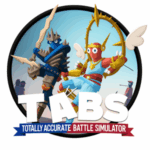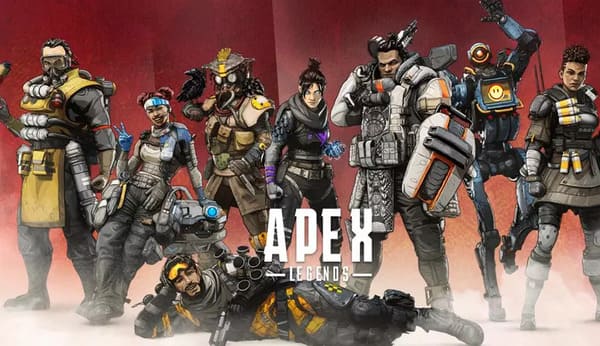Popular Now
Introduction
Zoonomaly, a psychological horror and zoo-management simulation hybrid, has become a cult favorite among indie gamers. With its haunting SCP-inspired narrative, creepy anomalous creatures, and tense survival mechanics, the game presents a rich and chilling world. However, beneath its unique premise lies a critical flaw that continues to frustrate players and break immersion — the flawed AI pathfinding system. This article investigates this core issue in depth: from its origins in game design to its cascading impact on gameplay and community response, ultimately proposing solutions for restoring both functionality and fear.
1. Early Impressions and Initial Glitches
At first glance, Zoonomaly captivates players with its eerie atmosphere and creative blend of horror and management simulation. The design cleverly forces players to contain, study, and survive against supernatural creatures. Yet, not long into gameplay, recurring issues with how AI-controlled characters navigate the world start to become evident.
Zookeepers often walk in circles, janitors get stuck behind doors, and anomalies — meant to stalk players — end up running in place. These initially amusing glitches gradually erode the tension. Players reported frequent cases of anomalies failing to chase or locate them due to broken routing logic, robbing the horror of its punch.
Case Study: SCP-892 "The Screamer"
One of the most infamous examples is the anomaly SCP-892. Meant to traverse air vents and ambush players unpredictably, it often gets stuck in inaccessible areas or repeats the same loop. Instead of being a constant, terrifying threat, it becomes an unintentional comic relief — a problem that undermines the core tension of the game.
2. The Core of the Problem: NavMesh Limitations
Zoonomaly's pathfinding relies on Unity’s Navigation Mesh (NavMesh) system. This system works well in static environments but falters when environmental changes are dynamic — which Zoonomaly embraces wholeheartedly. Doors that open and close, shifting walls, or moving entities aren’t seamlessly accounted for by the NavMesh, resulting in outdated or inaccurate routing.
For example, if a hallway collapses, AI agents may not recognize it as impassable until a manual update is triggered. The result? Characters attempting to walk through non-existent pathways, getting stuck, or defaulting to idle behavior.
Technical Breakdown
-
Static Assumptions: AI often assumes that all doors remain in their last known state, leading to path conflicts.
-
Delayed Refreshes: NavMesh data isn’t updated in real time, causing lag between changes in the environment and AI reactions.
-
Script Conflicts: Creatures using teleportation or scripted movement frequently override navigation data, breaking immersion.
3. Escalation in Mid-Game: Bigger Maps, Bigger Problems
As players unlock larger areas — like the Cryo Zone or the Temporal Containment Lab — the limitations of the AI become even more apparent. The AI must navigate longer paths and handle a greater variety of obstacles and objects. Unfortunately, this added complexity makes the flawed pathfinding even more prone to error.
Security bots often fail to reach breached zones. Staff members take inefficient routes or get stuck on small objects. In high-pressure moments, such as a multi-anomaly escape scenario, the AI's inability to function predictably turns an intense challenge into an exercise in frustration.
Notable Failures
-
Security drones patrolling unimportant areas during emergencies.
-
Zookeepers looping endlessly when trying to reach the main reactor.
-
Entities taking non-lethal paths that nullify scripted scares.
4. Community Backlash and Documentation
Player reaction to these issues was swift and vocal. Steam reviews, Reddit threads, and YouTube compilations highlighted bizarre AI behavior. These weren't isolated bugs — they were systematic failures.
Some players even began to treat the AI flaws as puzzles in themselves, creating guides to exploit or mitigate them. Others attempted to fix the problems independently by reverse-engineering the AI logic or submitting detailed reports and workarounds.
Modding Attempts
Modders attempted to bypass or replace the NavMesh with custom solutions. One mod in particular, “SmartRoute,” introduced a node-based navigation system with manual trigger points. While not perfect, it drastically improved reliability in test environments.
5. Developer Acknowledgement and Patch Attempts
After mounting pressure, the developers responded in patch 1.13.0 with an official statement acknowledging pathfinding limitations. They cited a “persistent mismatch between dynamic game state and AI navigation layers.” A series of patches followed to improve responsiveness and resolve some of the more egregious bugs.
The improvements were minor, however. AI characters were less likely to get stuck in elevators or behind doors, and security bots were given limited priority logic. But the root of the problem — dependence on a rigid NavMesh system — remained.
Key Fixes in Patch 1.13.1
-
AI now recalculates paths after major environmental shifts.
-
Certain entities have fallback paths if stuck for over 10 seconds.
-
Patrol behavior prioritizes zones with active threats.
6. Deep Design Flaws in AI Hierarchy
Beyond technical bugs, the AI's design hierarchy itself is deeply flawed. Zoonomaly uses a finite state machine (FSM) model where AI transitions between states like Patrol, Chase, or Flee based on triggers. These states rely on location data from the NavMesh.
If the data is invalid or missing, the AI either idles, loops, or chooses an illogical action. The lack of redundancy — such as predictive behavior trees or layered decision-making — makes the system brittle.
Contrast: Alien: Isolation
In Alien: Isolation, the AI adapts its strategies, choosing paths dynamically and reacting to the player in real time. Zoonomaly's AI feels static and inflexible by comparison, unable to respond to unexpected changes or blocked routes.
7. Impact on Gameplay and Immersion
The failure of AI navigation doesn’t just annoy players — it fundamentally disrupts the game’s design philosophy. The horror is built on unpredictability, but when creatures fail to pursue, or guards fail to respond, the experience becomes mechanical and predictable.
Moments meant to create tension — like a chase through a locked-down sector — become laughable if the creature gets stuck at the entrance. Instead of feeling hunted, the player feels like a caretaker for malfunctioning animatronics.
Immersion-Breaking Examples
-
Creatures pacing endlessly in corners while alarms blare.
-
Guards failing to enter rooms with active threats.
-
Players exploiting known glitch zones to “trap” anomalies permanently.
8. Missed Opportunities for Adaptive AI
Zoonomaly’s unique structure — a zoo of evolving, anomalous entities — is the perfect setup for adaptive, learning AI. But that potential goes unrealized. Instead of AI that evolves with the player or adapts based on prior encounters, Zoonomaly offers static behavior that repeats until it breaks.
This could have been avoided with simple heuristics: anomalies adjusting based on player habits, AI creating new routes after repeated failures, or path memory over time. These features not only reduce bugs but add a new dimension to fear.
Suggestions for Improvement
-
Use waypoint-based memory to simulate AI learning.
-
Introduce per-anomaly movement logic (e.g., incorporeal entities ignore walls).
-
Allow adaptive routing based on recent player movement.
9. Promising Prototypes and Fan-Made Solutions
With official patches falling short, the community took matters into its own hands. The most promising fan-made fix is “Zoonomaly: Rerouted,” a full overhaul of AI navigation. It replaces NavMesh logic with a hybrid node-grid system that updates dynamically with environmental changes.
Testers report that AI using Rerouted can now reach players reliably, adapt to changes, and no longer idle unpredictably. While still in beta, this mod proves that Zoonomaly’s problems are solvable with fresh architectural thinking.
Key Takeaways from Modders
-
AI navigation doesn’t need to be complex — just robust and adaptive.
-
Giving the community tools to tweak AI logic leads to innovation.
-
Modders are solving problems the core team hasn’t yet prioritized.
10. Looking Ahead: Can Zoonomaly Fix Its Foundation?
Zoonomaly’s identity is tied to chaos — and a properly functioning AI system can turn that chaos into brilliance. But first, the developers must move beyond surface-level fixes and confront the foundational flaws in their design.
Whether through a rebuilt navigation system or the integration of community-built tools, the AI must evolve. Only then can the game reach its full potential — a horror experience where the anomalies feel as smart and unpredictable as they should be.
Final Thoughts
The time for band-aid fixes is over. Zoonomaly must reimagine its AI — not just to fix bugs, but to fulfill the promise of its terrifying premise.
















